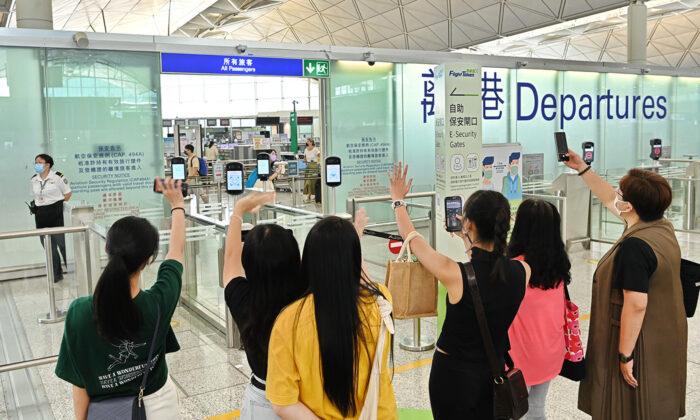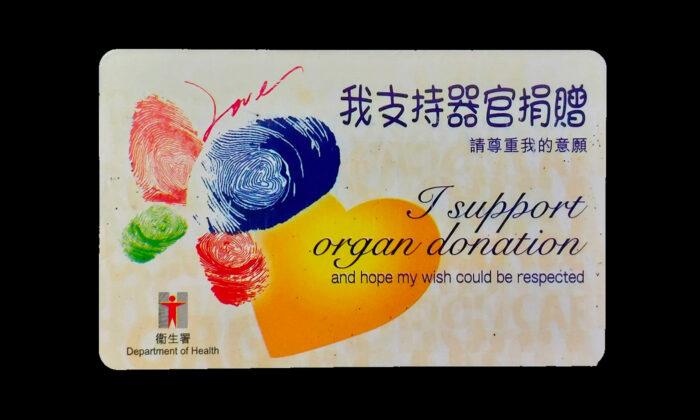On May 5, The National Security Bureau of the Hong Kong Police seized the Pillar of Shame (June 4 memorial statue), a sculpture created by Danish artist Jens Galschiøt, claiming the sculpture to be related to a national security case of “inciting others to subvert state power.”
Jens Galschiøt, owner and creator of the Pillar of Shame, called the event crazy and outrageous. He affirmed that the symbolic language of art could never be crushed and would only get stronger when attacked.
Pillar Of Shame in Hong Kong
Portrayed and engraved with distorted bodies and agonizing faces, Pillar of Shame is an art sculpture commemorating victims of different massacres.The art sculpture series contained six pieces, The other statues stood around the world, in Rome, Mexico City, Brasilia, Copenhagen, and Berlin.
The Pillar of Shame in Hong Kong was completed in 1997 for the June 4 Tiananmen Square Massacre victims. It was placed permanently at the University of Hong Kong in June 1997 until Dec. 22, 2021.
‘Blatant Violation of Human Rights’
Ngo Dei, a group founded by Hongkongers in the Czech Republic that once assisted Galschiøt in displaying his sculptures, issued a statement condemning the Hong Kong Police for their action and has launched a joint effort online.Ngo Dei described the incident as “deeply troubling.” The Hong Kong Police used the “incitement to subversion” as an excuse to seize the Pillar of Shame monument, “a powerful symbol of democracy and human rights.”
The group also said that the Hong Kong Police infringed on freedom of art and attacked the memory and legacy of the Tiananmen Square Massacre victims.
“We urge the Hong Kong authorities to respect artistic freedom and immediately return the Pillar of Shame. We also call on the international community to join us in condemning this blatant violation of human rights and creative freedom and to pressure the Hong Kong government to protect the rights and freedoms of Hong Kong citizens.” The group cited.
On May 6, Ngo Dei launched a signing petition on change.org, demanding the authorities to free the Pillar of Shame and explain to the public and Danish artist Mr. Jens Galschiøt “the reasons for confiscating the Pillar of Shame and how it is related to any relevant legal case.”
National Security Bureau’s Response
On May 6, Hong Kong Security Bureau admitted in an official statement that The National Security Department of the Hong Kong Police Force “conducted searches with a warrant and seized an exhibit related to an ‘incitement to subversion’ case under the National Security Law.”The Bureau strongly condemned “an organization” for making false accusations against the police action. The authorities also described their confiscation of the Pillar Of Shame as evidence collection which was “legal, reasonable, and rational.”
Chris P.K. Tang, Secretary for Security, told reporters after appearing on a radio program the case in question had entered legal procedures. Therefore, he could not comment on it.
Sculpture Owner: Crazy and Outrageous
Galschiøt commented on the incident in an interview with Radio Free Asia, “It is crazy and outrageous.”He said that the statue had been erected on the campus of The University of Hong Kong for 20 years before Hong Kong was handed over back to China by the British.
Galschiøt added that the political repression of the Chinese Communist Party and the Hong Kong government violated his private property, and the regime abducted The Pillar of Shame.
He reckoned the event confirmed that the symbolic language of art could not be crushed and would only get stronger when attacked. The language of art symbolism could never be destroyed, “The more suppressed it is, the stronger it will only become.”
On May 6, Galschiøt expressed his shock on “Ed Chin World” on YouTube when talking about removing his sculpture from The University of Hong Kong campus in 2021. He suspected the Police wanted to use The Pillar of Shame as court evidence against the democratic movement. He had asked for the return of the pillar, but the Police never responded after a year and a half of waiting.
Galschiøt also said the Hong Kong government’s statement was odd because it mentioned protecting Hong Kong citizens’ freedom yet restricting it at the same time.




